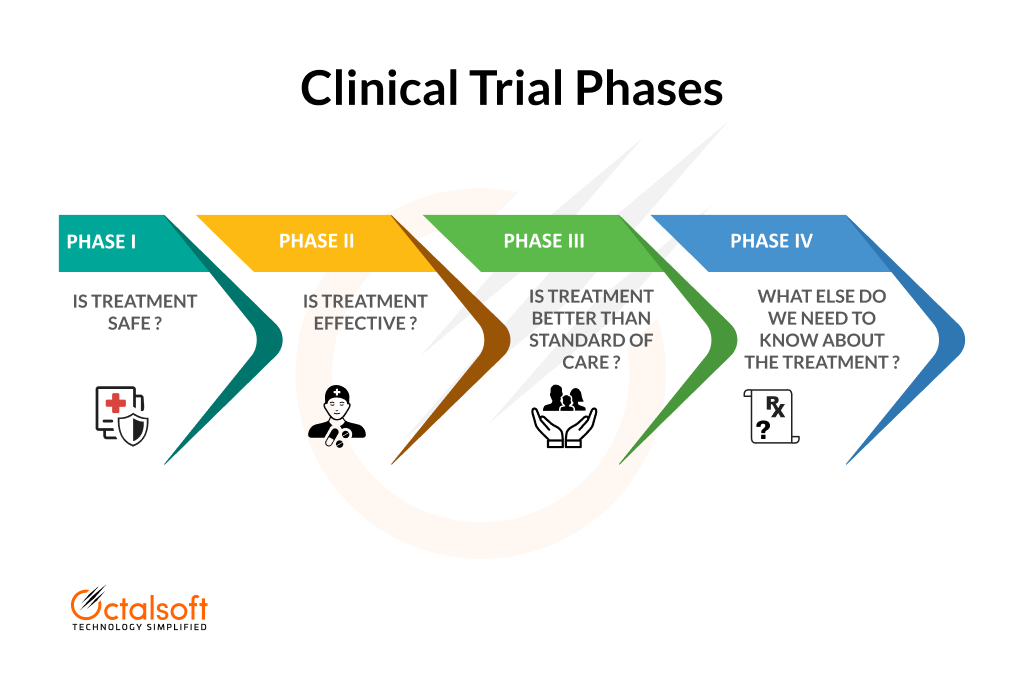EDC, or electronic data capture, a platform for electronic data collection, is a must-have for clinical studies. EDC software systems reliably and efficiently sort, clean, and show data. These systems can save time while maintaining research quality. They are, in many ways, the future of clinical research.
There are numerous such tools available, and not all of them have optimal characteristics. If your company invests in a system that fails, your team may be held back, or you may waste time and money through another software change.
Consider the demands of your team as well as the patients who will be using your therapy. Here are the top five features to look for in an EDC platform.
1. Cloud Functionality
The clinical trial industry is beginning to investigate the potential of cloud data and what it means for security and data sharing. To be sure, the healthcare industry was at first skeptical about cloud capabilities, but more regulators, academics, and pharmaceutical companies are seeing the benefits of this storage and sharing system.
"When we first started looking at the cloud, most regulators had the 'cloud is bad' approach — you shouldn't put medical data on the cloud, period," says Jonathan Armstrong, a U.K. lawyer and co-author of "Managing Risk: Technology and Communications." "It's not as simple as that... If the cloud-based app is properly built, it is less probable that someone will be able to identify the individual because the software can help us use anonymizing techniques more efficiently."
Even while regulators allow cloud storage solutions and urge businesses to invest in these systems, some businesses are still hesitant to make the switch. Internal server-based on-premises storage systems have proven to be secure thus far, despite restricted sharing possibilities.
As more healthcare cloud service solutions enter the market, entrepreneurs are inventing better ways to protect patient identity data. The demand for safe health data continues to rise, and EDC system developers are responding to their customer's expectations.
As you evaluate EDC options, inquire about cloud capabilities and security aspects. Discover how to upload and exchange data while protecting it from hackers.
2. Data Cleaning
The COVID-19 epidemic may push more businesses to adopt EDC platforms. As clinical trials become more distant and researchers encounter fewer patients in person, teams must ensure that data is being collected, organized, and cleansed.
Data sources must be sorted and arranged before being presented in clear reports that demonstrate the benefit of the treatment option or new medicine selection.
"Data collected may have errors from multiple sources—data manually entered in a case report form may have typographical errors, whereas data obtained from data warehouses or administrative databases may have missing data, implausible values, and nonrandom misclassification errors," explain Miren B. Dhudasia, Robert W. Grundmeier, and Sagori Mukhopadhyay of Children's Hospital of Philadelphia. "Using a methodical approach to discover and correct these problems, while keeping a log of the steps taken in the process, can help to avoid several bottlenecks during analysis."
Outliers or anomalies with data sets can be identified by an EDC system with data cleaning tools. This allows the technicians to analyze the data and determine whether it needs to be changed or whether any data points should be eliminated from the entire set.
3. Remote Verification
Together with data cleaning, clinical researchers must ensure the accuracy of the data and the confidentiality of patient information. Because of the epidemic, the usage of remote information and digital tools is also increasing.
The Regulatory Affairs Professionals Society's senior editor, Michael Mezher, discusses revisions to EU guidelines regarding therapeutic trials conducted during the COVID-19 epidemic. Historically, researchers could only employ remote source data verification (rSDV) in the last data cleaning processes, and only under certain conditions. Trial organizers can now employ rSDV for a wide range of data requirements, including on-site, centralized, and off-site monitoring.
When remote data verification establishes its worth, more regulators are willing to use it. The use of rSDV today may pave the door for increased use in non-emergency studies in the future.
"Data may be messy, but that is due to the process, not the data," explains Nechama Katan, Pfizer's data science head.
"We can control the data if we can control the process." That does not imply attempting to manage every single step, but rather the big picture. Your business will have clean and verified data with an EDC platform, guaranteeing superior clinical reporting that proves your findings.”
4. Electronic Medical Record Integration
Electronic medical records (EMRs) are an important source of data for clinical trial leaders. Researchers can better sync the information with data acquired throughout the experiment when they are incorporated with EDC technologies.
"With modern health systems, we can collect a lot more information about how drugs are taken by patients and the effects they have on patients," says Brendan Barnes, director of intellectual property and data protection at the European Federation of Pharmaceutical Companies and Associations. "This completely changes the way we undertake medicine research and development."
Some medical professionals are advocating for reforms to EMRs. They want improved data that provides a clear picture of the patient and a treatment plan.
"A reform of the electronic health record is long overdue," says John Glaser, CEO in residence at Harvard Medical School. "The electronic health record must shift from focusing on a person's medical record to focusing on a person's health plan, and from enabling clinical transactions to focusing on delivering information to the practitioner and the patient."
This is not a procedure that just clinical trial leaders and healthcare providers go through. The software business as a whole is working hard to develop better, more intuitive technology that its consumers can readily accept.
"Anytime you change technology, you tend to modify the entire work system to some level," says Daniel Morrow, professor of educational psychology at the University of Illinois Urbana-Champaign, of his study on the adoption of Electronic Health Records. "While building these systems, it's critical to take a user-centered approach and keep users' viewpoints in mind so you can foresee how their work processes will evolve."
5. Report Customization
Researchers can propose their findings for FDA approval and eventual release once the data has been collected, cleaned, and reviewed.
Researchers can also use EDC platforms to produce customized reports that highlight tiered outcomes, which can aid in this process.
"Electronic data capture systems used in clinical studies generally contain a wide range of report kinds, with multiple relevant reports for various roles," notes Mava Roques, clinical trial leader at Scimega, a Canadian oncology CRO. "The time spent by clinical operations team members familiarising themselves with relevant report functions was well spent."
The generated and reviewed reports will be an important part of the clinical study report (CSR). They can provide specific information highlighting the findings and adding context to the job that researchers set out to undertake.
Sheryl Stewart, a marketing manager at the medical equipment company Edwards Services, highlights the importance of statistics and critical messaging in CSRs. She says that while the International Council for Harmonization and the Food and Drug Administration have templates for developing CSRs, researchers are not compelled to use them. If they can improve their explanations and dialogues using an EDC platform, their reports will be more valuable.
In Summation
In today's world, many research and biotech companies are aware of the benefits that electronic data capture (EDC) has over paper case report form (CRF) forms and therefore rely on technology to support clinical studies.
In order to keep up with the rapid pace of development in the software industry, leading tech firms in the clinical trial space are continually developing new functional advancements and features when it comes to EDC systems.
The highly acclaimed Octalsoft EDC includes a Randomization Module, an Electronic Patient-Reported Outcome (ePRO) Module, and a Trial Supply Module to facilitate the effective planning of shipments and the distribution of medications.
Octalsoft continues to maintain a commitment to decreasing the costs associated with research despite the significant reduction in the amount of time between the gathering of data and the locking of the database.
Interested in finding out more about Octalfoft’s EDC system solutions? Book a demo with us NOW.



